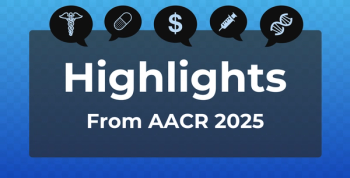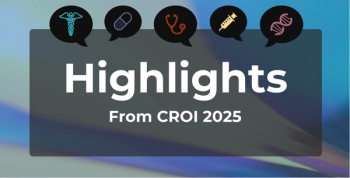
TMP-SMX Linked to Higher 30-Day Respiratory Failure Risk in Adolescents and Young Adults
Key Takeaways
- Adolescents and young adults on TMP-SMX have a higher 30-day risk of acute respiratory failure than those on amoxicillin or cephalosporins.
- The study supports the FDA's warning about TMP-SMX, with severe cases requiring mechanical ventilation or resulting in death.
A large cohort study found adolescents and young adults starting TMP-SMX faced a higher 30-day risk of acute respiratory failure than those on other antibiotics.
Adolescent and young adult patients who were prescribed the oral antibiotic trimethoprim-sulfamethoxazole (TMP-SMX) in outpatient settings had a 30-day higher risk of acute respiratory failure than patients who started amoxicillin or cephalosporins, according to
The study’s findings were published 6 years after the
This retrospective, population-based, new-user cohort study used administrative health care databases dated from April 1, 2002, to August 1, 2023. The study was split into 2 cohorts, TMP-SMX vs amoxicillin and TMP-SMX vs cephalosporins, to evaluate the association between TMP-SMX and acute respiratory failure. Both cohorts’ patient populations were comprised of adolescents and young adults aged 10 to 25 years who were newly dispensed oral TMP-SMX for 3 days or more from an outpatient pharmacy.
TMP-SMX vs Amoxicillin or Cephalosporins
In the TMP-SMX vs amoxicillin cohort, there were 575,218 individuals, 44,801 of whom were newly dispensed TMP-SMX and 530,417 who received amoxicillin. The median age was 19 years, and 74.3% were female. After adjusting for 84 covariates, including demographics, comorbidities, and medication use, there were 21,579 individuals in each group with a median age of 19 years; of them, 74.3% were female, and 15,383 of them received a prescription for TMP-SMX or amoxicillin from their primary care physician.
The primary outcome was a 30-day hospital visit with acute respiratory failure, which occurred in 0.03% of patients in the cohort who started TMP-SMX and 0.01% in patients who started amoxicillin. The median time from starting the prescription to the primary outcome was 9 days in the TMP-SMX group and 20 days in the amoxicillin group.
In the TMP-SMX vs cephalosporins cohort, after adjusting for covariates, each group had 20,538 individuals, in whom the median age was 19. Of them, 72.3% were female, and 15,797 had received prescriptions for TMP-SMX or cephalosporins from their primary care physician.
Similar to that of the TMP-SMX vs amoxicillin cohort, the primary outcome in the TMP-SMX vs cephalosporins cohort occurred in 0.03% of patients who started TMP-SMX and in 0.01% of patients who started cephalosporins. The median time from the start of prescription to the primary outcome was 9 days for both the TMP-SMX group and the cephalosporins group.
These findings support and extend previous evidence linking TMP-SMX to acute respiratory failure, many cases of which required invasive ventilation or lung transplants, with some resulting in death. Whereas the majority of patients prescribed TMP-SMX did not develop acute respiratory failure, researchers presume the small subset who did may be genetically predisposed. Additionally, they noted that the development of acute respiratory failure may have resulted from the underlying infection in some cases as opposed to the drug itself.
This study was limited by its observational design precluding researchers from establishing causality between TMP-SMX use and acute respiratory failure, thus complicating the interpretation of the association. Because TMP-SMX is also occasionally used in the management of acute COPD exacerbations—often precipitated by bacterial infections such as those affecting the airways—underlying infectious processes may still contribute to respiratory decline independent of the medication itself.1,3 Therefore, residual confounding from unmeasured factors could not be ruled out. The study also faced limitations in assessing clinical indications for antibiotic prescriptions, reliance on administrative data, and potential missing data on prior medication use due to insurance transitions.
“In this cohort study of healthy adolescents and young adults starting TMP-SMX, the 30-day risk of a hospital visit with respiratory failure was higher than for those starting with amoxicillin or cephalosporins,” the study authors concluded. “These findings support the FDA warning, warranting replication, careful risk–benefit evaluation, and updates to product monographs and prescribing guidelines.”
References
1. Ahmadi F, McArthur E, Garcia-Bournissen F, Rieder MJ, Muanda FT. Trimethoprim-sulfamethoxazole and acute respiratory failure in adoclescents and young adults. JAMA Netw Open. 2025;8(11):e2545251. doi:10.1001/jamanetworkopen.2025.45251
2. Bactrim. Prescribing information. Sun Pharmaceutical Industries; 2024. Accessed November 21, 2025.
3. Auwaerter PG. Exacerbations of chronic obstructive pulmonary disease (COPD). Johns Hopkins ABX Guide. June 10, 2024. Accessed November 24, 2025.
Newsletter
Stay ahead of policy, cost, and value—subscribe to AJMC for expert insights at the intersection of clinical care and health economics.









































